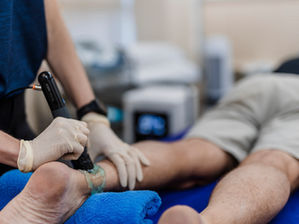Health Advances
- intouch Magazine
- Feb 1, 2021
- 3 min read

GREAT IDEAS ATTRACT $7 MILLION IN GRANTS
Seven University of Newcastle researchers have been awarded more than $7 million in National Health and Medical Research Council (NHMRC) Ideas Grants, designed to support innovative and creative research projects which address a specific question.
In collaboration with Hunter Medical Research Institute (HMRI), the Newcastle researchers will explore the effect of bushfire smoke on unborn babies, evaluate wheat as a cause of chronic indigestion, investigate the link between a stroke drug and dementia, and study why the process of perception is disrupted for people living with schizophrenia.
Other projects will focus on the future of Aboriginal health research; possible links between attention deficit hyperactivity disorder and anxiety with preterm birth; and a potential therapeutic strategy for severe asthma.
University of Newcastle Deputy Vice-Chancellor (Research and Innovation) Professor Janet Nelson said the NHMRC funding reflected the University’s passion for, and commitment to, driving health outcomes for people in our region and beyond.
“Our researchers are at the forefront of their respective fields, ready to challenge conventional thinking, break new ground and create better health initiatives that change lives,” Professor Nelson said.
“This funding will help our Hunter-based researchers discover, develop, and deliver new solutions to significant health challenges that affect all Australians.”
SCIENTISTS USE 3D PRINTER TO PRINT 'BONE' WITH LIVING CELLS
3D printers may one day become a permanent fixture of the operating theatre after UNSW scientists showed they could print bone-like structures containing living cells.
Scientists from UNSW Sydney have developed a ceramic-based ink that may allow surgeons in the future to 3D-print bone parts complete with living cells that could be used to repair damaged bone tissue.
Using a 3D-printer that deploys a special ink made up of calcium phosphate, the scientists developed a new technique, known as 'ceramic omnidirectional bioprinting in cell-suspensions' (COBICS), enabling them to print bone-like structures that harden in a matter of minutes when placed in water.
While the idea of 3D-printing bone-mimicking structures is not new, this is the first time such material can be created at room temperature – complete with living cells – and without harsh chemicals or radiation, says Dr Iman Roohani from UNSW’s School of Chemistry.
“This is a unique technology that can produce structures that closely mimic bone tissue,” he says.
“It could be used in clinical applications where there is a large demand for in situ repair of bone defects such as those caused by trauma, cancer, or where a big chunk of tissue is resected.”
Associate Professor Kristopher Kilian who co-developed the breakthrough technology with Dr Roohani says the fact that living cells can be part of the 3D-printed structure, together with its portability, make it a significant advance on current state-of-the-art technology.
Up until now, he says, making a piece of bone-like material to repair bone tissue of a patient involves first going into a laboratory to fabricate the structures using high-temperature furnaces and toxic chemicals.
“This produces a dry material that is then brought into a clinical setting or in a laboratory, where they wash it profusely and then add living cells to it,” Professor Kilian says.
“The cool thing about our technique is you can just extrude it directly into a place where there are cells, like a cavity in a patient’s bone. We can go directly into the bone where there are cells, blood vessels and fat, and print a bone-like structure that already contains living cells, right in that area. There are currently no technologies that can do that directly.”




















































